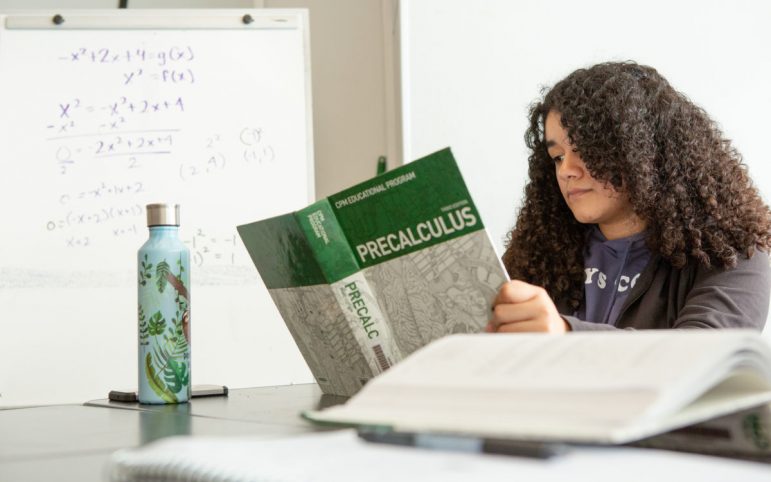The California Department of Education on Monday published its second crack at a new Mathematics Framework, a set of guidelines for math instruction that last year became the center of both a culture war about progressive education and an academic debate over how the state’s public schools should teach math.
The upshot: Despite lots of pushback, the drafters haven’t changed much.
The new draft of the proposed framework — a non-binding series of recommendations — largely doubles down on the key goals of making math more relatable and closing the achievement gaps for Black and Latino students.
One of the key criticisms of the original: that by delaying algebra until 9th grade, it would make it tougher for most students to ever take high school calculus, a prerequisite or preference for many competitive colleges.
The drafters responded to that criticism by including examples to show how students could get to calculus by their senior year — for example, by taking two math classes, Geometry and Algebra II, at the same time.
Maria Clayton, a spokesperson for the California Department of Education, said the framework will give “more students the opportunity to be successful performing the highest levels of math — including calculus and statistics.” The goal, she said, is to get more students into jobs in science, technology, engineering and math without sacrificing the quality of instruction in California’s public schools.
Critics have said condensing math classes into one would force teachers to omit or rush through important material. Some of those critics told CalMatters late Monday they were still reviewing the revised framework to decide what to make of any changes.
This second iteration of the framework, published over a year after the first, consists of 14 chapters and two appendices, all amounting to over 1,000 pages. It provides a handbook for school district administrators and teachers for how to make sure students meet state standards.

The framework has never required mandatory changes for local school districts. Any changes are voluntary and on the local level. Local districts would still be able to decide when students take certain math classes.
The authors of the framework did not immediately respond to requests for comment. These math education experts from across the state have maintained that their intention was to make math more engaging and more welcoming for historically marginalized students, including women and Black and Latino students.
Jo Boaler, a professor at Stanford University, is one of the framework’s authors and a vocal advocate for more “progressive” forms of math instruction. This means more project-based assignments that are open-ended and relevant to real-world issues, departing from more traditional modes of instruction based on repetition and memorization.
The authors of the framework argue that teachers should strive to make math exciting and relatable for all students. It urges teachers not to label students as having or lacking “math brains” and to use more inclusive language in word problems. And supporters have argued that to better prepare students for a changing economy, California high schools should offer alternatives to calculus, such as data science and statistics.
The framework drew nationwide criticism from proponents of a more traditional approach.
While some pundits warned of dangers inherent in “woke math,” academics from a variety of fields said the original framework watered down the rigor of high school math and threatened the state’s advancement in science, technology, engineering and mathematics.
Some parents also said the framework would hold back students from taking calculus in high school, which would threaten their chances of college admission. While the framework does encourage students to wait until 9th grade to take Algebra 1, it says districts can find ways to condense other classes like Algebra 2 and Pre-Calculus to make sure students could get to AP Calculus by 12th grade.
Waiting until 9th grade to take Algebra 1, however, has had mixed results at San Francisco Unified, CalMatters found. The district adopted the policy in 2014, resulting in improved grades but lower standardized test scores at some schools.
Morgan Polikoff, an education professor at the University of Southern California, said the framework will likely influence the way some districts teach math, even though it’s just a set of recommendations.
“I could definitely imagine that the framework could actually affect how districts structure their offerings,” he said.
Polikoff added that a non-binding framework sends two messages.
“On the one hand, the state clearly believes it’s best to teach mathematics in certain ways,” he said. “But on the other hand, there’s this intense resistance to any form of actual state oversight over curriculum.”
The new draft of the framework will undergo a 60-day public review period ending May 16. The California State Board of Education is scheduled to vote to approve the framework in July.
